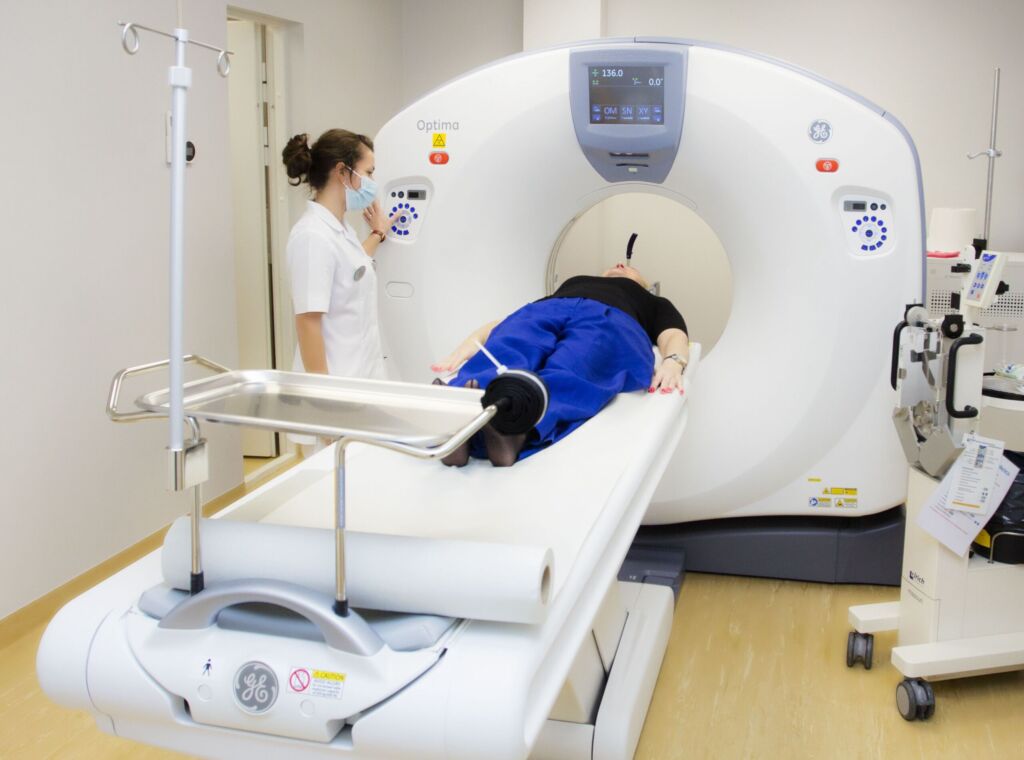
Uuringud ja diagnostika

Pakume nii tasulisi kui Tervisekassa kindlustuse raames teostatavaid uuringuid. Medicumis on olemas radioloogia osakond, labor ja mitmed teenused tervise uurimiseks.
Nägemiskontroll
Nägemiskontrolli teostab optometrist vastuvõtu käigus.
Nägemiskontrolli viib läbi optometrist, kelle põhitöö on inimeste nägemisteravuse, valguse-, värvi- ja vormitaju uurimine ja korrigeerimine ning silmatervisealane nõustamine. Samuti uute prillide või kontaktläätsede välja kirjutamine. Üldjuhul tegeleb optometrist tervete silmadega, aga kui nägemiskontrolli käigus peaks ilmnema silmahaigusele viitav seisund, soovitab ta kindlasti täiendavaid uuringuid silmaarsti juures.
Protseduuri käigus kasutatakse autorefraktomeetrit, mida kasutatakse silma refraktsiooni mõõtmiseks. See aitab kindlaks teha, kas silmal on lühinägevus või kaugnägevus, ehk seda, kui tugevaid miinus- või plussprille võiks vaja minna.
Millal ja kui tihti tulla nägemiskontrolli?
Nägemiskontroll aitab kindlaks teha, kui hästi inimene suudab näha ja kas tema nägemine vastab normidele või vajab parandamist.
Lapsed
- Beebi esimese eluaasta jooksul
- Lapse 18.–24. elukuu vahel, hiljemalt 3-aastaselt
- 6-aastaselt, enne kooli.
- Edaspidi iga kahe aasta tagant
Täiskasvanud
- Üle kahe aasta (kuni 40-aastased inimesed)
- Kord aastas (üle 40-aastased).
Kui nägemine on nõrgenenud, kui nt teleri vaatamine või kirjateksti lugemine on raskendatud või liikluses ei näe hästi liiklusmärke või bussi numbrit. Ka peavalud võivad anda märku nägemise halvenemisest, eriti kui valud ilmnevad päeva lõpus või pärast rohket ja intensiivset lähitööd.
Enne uuringut
Kui Teil on juba prillid, siis tasub need uuringule kaasa võtta. Läätsekandjatel palutakse eemaldada läätsed silmast vähemalt 2 tundi enne kontrolli algust.
Uuringu ajal
Kaugele vaatamiseks kontrollitakse kõigepealt silmi eraldi, seejärel leitakse parim võimalik mugav korrektsioon kahe silmaga koos vaadates. Kontrolli käigus kasutatakse testtabelit, mis võimaldab leida optimaalse nägemisteravuse.
Lähi nägemiskontrolli käigus on oluline täpsustada, millisele distantsile vaatamiseks prille kasutama hakatakse. Sageli on näiteks lugemiseks ja käsitöö tegemiseks mõõdetud prillid kuvariga töötamiseks liiga tugevad.
Nägemiskontrolliks kasutatakse ka autorefraktomeetria masinat, mis annab korrigeerimise vajadustest esmast informatsiooni instrumendi abil. Patsient vaatab läbi seadme ja keskendub kuvatavale punktile või märgile. Autorefraktomeeter saadab silma sisse nähtamatuid valguskiiri, mis peegelduvad tagasi silma kudedest. Seade mõõdab nende tagasipeegeldunud kiirte põhjal silma refraktsiooni ja korrigeerimise vajadust.
Kestvus
Nägemiskontrolliks kulub umbes 15 – 30 minutit.
Tulemused
Nägemiskontrolli tulemused selguvad vastuvõtu käigus. Kokkulepped tulemuste teemal fikseeritakse prilliretseptiga, mille alusel on võimalik uued prillid soetada.